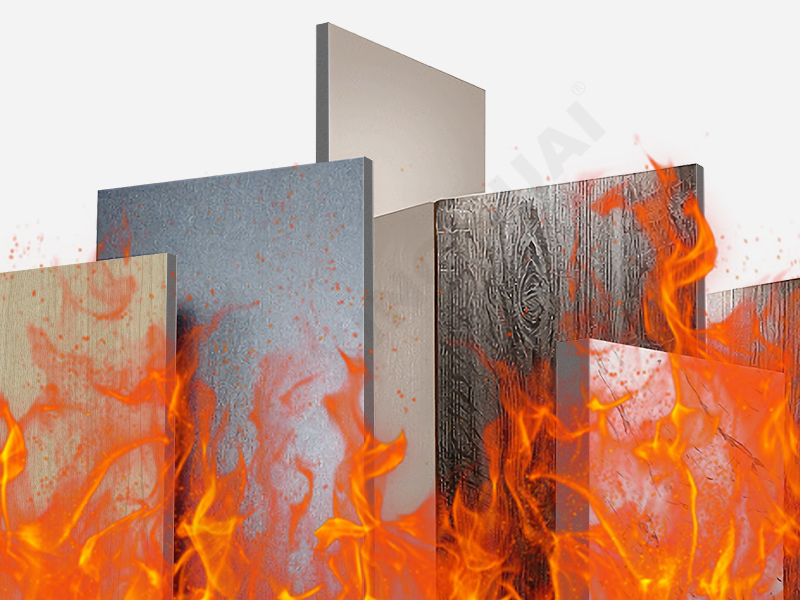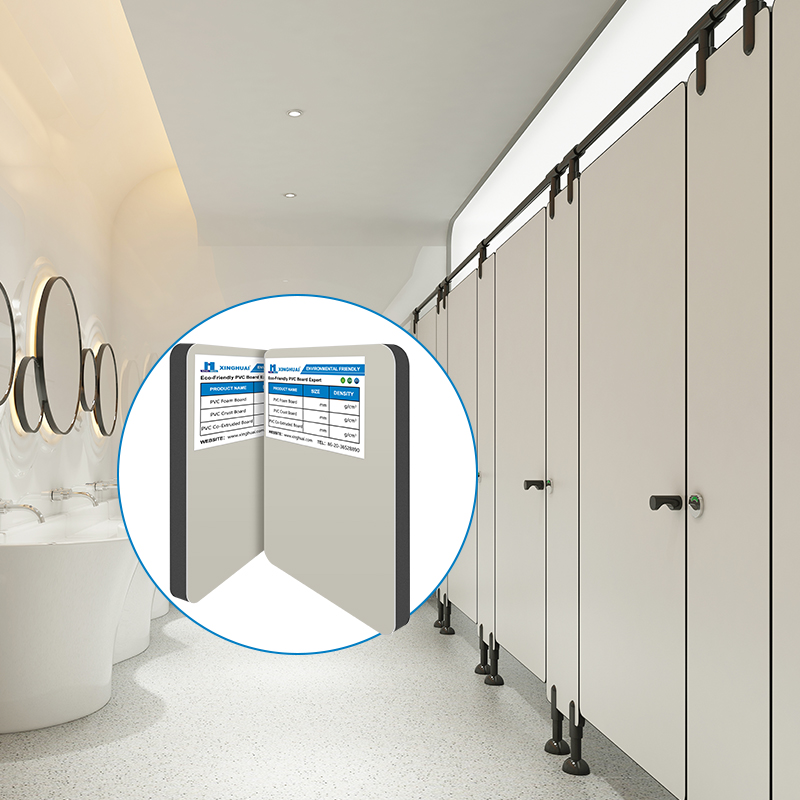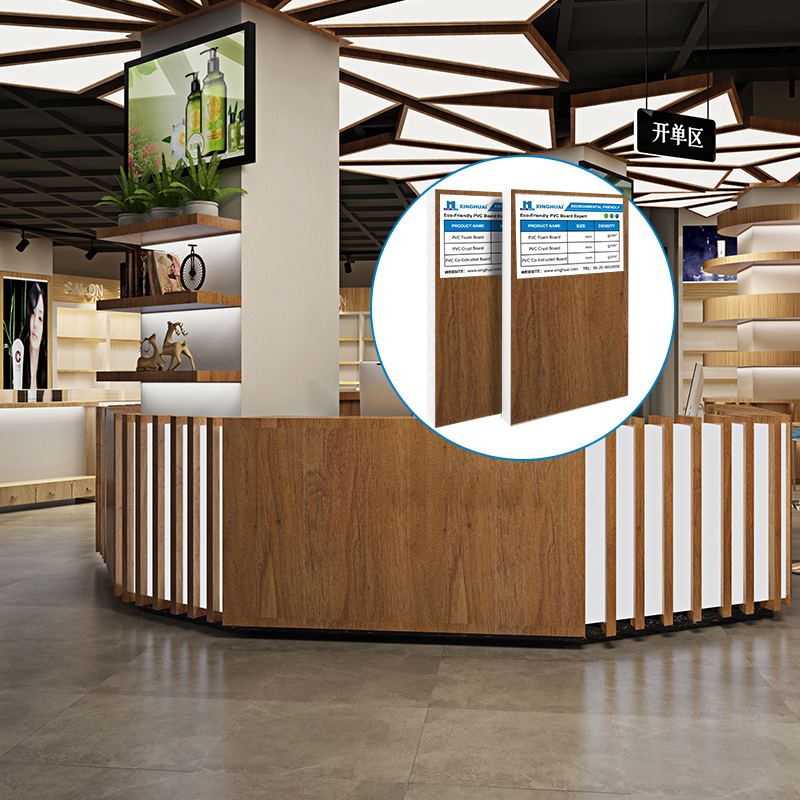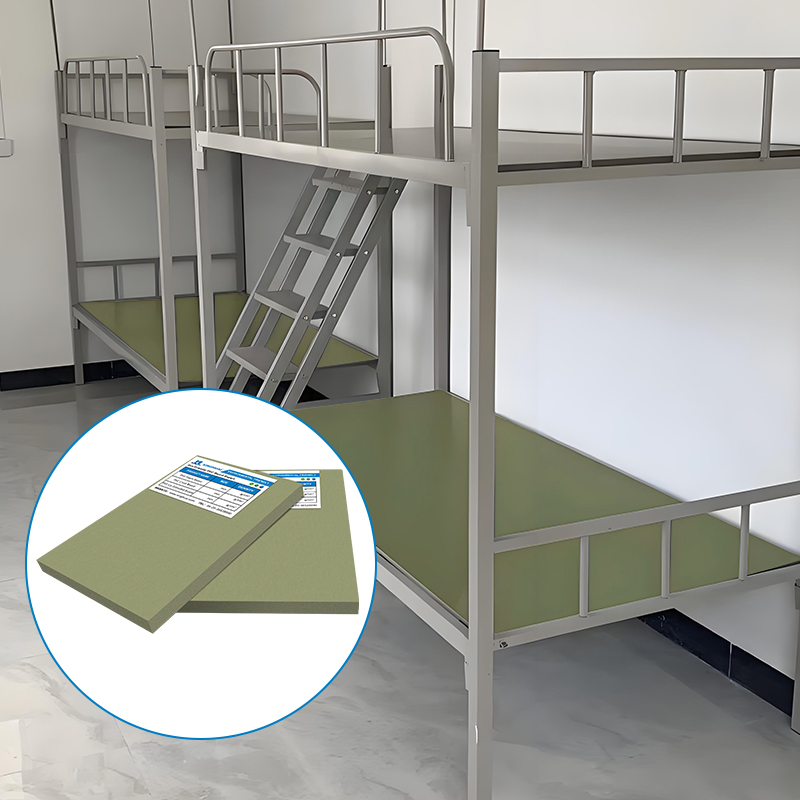Co-extruded sheets have become indispensable in various industries due to their versatile properties, and their performance can be further enhanced through appropriate surface treatment methods. Understanding these methods is crucial for maximizing the functionality and aesthetics of co-extruded sheets, which are often used in conjunction with materials like pvc foam wall panels, pvc wpc foam board, laminated pvc ceiling, concrete formwork PVC sheets, and extruded foam board. Each surface treatment method is designed to address specific needs, from improving durability to enhancing visual appeal, making them essential considerations in product development and application.

One common surface treatment method for co-extruded sheets is coating, which plays a vital role in enhancing their performance. This method involves applying a thin layer of protective or decorative material to the sheet’s surface. For co-extruded sheets used in pvc foam wall panels, a UV-resistant coating is often applied to prevent color fading and surface degradation caused by sunlight exposure. Similarly, pvc wpc foam board, which combines PVC with wood fibers, benefits from a water-resistant coating applied through surface treatment, ensuring it maintains its integrity in humid environments. Coating is also widely used for extruded foam board, providing a smooth finish that enhances its suitability for various applications.

Lamination is another key surface treatment method that significantly impacts the quality of co-extruded sheets. This process involves bonding a layer of film or sheet material to the co-extruded sheet’s surface, offering both protection and aesthetic enhancement. Laminated pvc ceiling products frequently use this method, where decorative films are laminated onto co-extruded sheets to achieve various textures and patterns, from wood grains to metallic finishes. Lamination also improves the scratch resistance of co-extruded sheets used in high-traffic areas, making them ideal for integration with pvc foam wall panels in commercial spaces. For pvc wpc foam board, lamination adds an extra layer of protection against wear and tear, extending its service life.
Printing is a surface treatment method that focuses on enhancing the aesthetic appeal of co-extruded sheets. Advanced printing techniques, such as digital printing and screen printing, allow for intricate designs and vibrant colors to be applied directly to the sheet surface. This method is particularly popular for co-extruded sheets used in decorative applications, complementing laminated pvc ceiling designs with coordinated patterns. Pvc foam wall panels often utilize printed co-extruded sheets to create visually appealing feature walls, with designs ranging from nature-inspired motifs to abstract art. Printing is also used on pvc wpc foam board to mimic the appearance of natural wood, providing a cost-effective alternative to solid wood products.
Embossing is a surface treatment method that creates textured patterns on co-extruded sheets through mechanical processes. This method not only enhances the visual appeal but also improves grip and reduces glare. Co-extruded sheets used in pvc foam wall panels often undergo embossing to create tactile surfaces that add depth and interest to interior spaces. Embossed co-extruded sheets are also used in conjunction with extruded foam board to create non-slip surfaces for flooring applications. For concrete formwork PVC sheets, embossing can create specific textures that are transferred to the concrete surface, eliminating the need for additional finishing work. Pvc wpc foam board benefits from embossing to enhance its wood-like texture, making it more visually authentic.
Chemical treatment is a specialized surface treatment method that modifies the chemical properties of co-extruded sheets to improve adhesion, corrosion resistance, or other functional properties. This method is particularly important for co-extruded sheets that will undergo further processing, such as bonding with other materials. For example, concrete formwork PVC sheets often receive chemical treatment to enhance their release properties, ensuring easy separation from cured concrete. Chemical treatment also improves the paint adhesion of co-extruded sheets used in pvc foam wall panels, allowing for a wider range of finishing options. Pvc wpc foam board may undergo chemical treatment to enhance its resistance to mold and mildew, making it suitable for humid environments.
Flame treatment is a surface treatment method that uses controlled flame exposure to modify the surface of co-extruded sheets, improving their wettability and adhesion properties. This method is especially useful for preparing co-extruded sheets for subsequent bonding or coating processes. Flame-treated co-extruded sheets are commonly used in the production of laminated pvc ceiling products, ensuring strong adhesion between layers. For extruded foam board, flame treatment enhances the bonding strength with adhesives, making it easier to install in various applications. Pvc foam wall panels often utilize flame-treated co-extruded sheets to ensure secure bonding with mounting systems, improving overall installation reliability.
Plasma treatment is an advanced surface treatment method that uses ionized gas to modify the surface properties of co-extruded sheets at a molecular level. This method is highly effective for improving adhesion, wettability, and surface energy without altering the sheet’s bulk properties. Plasma-treated co-extruded sheets are ideal for use in medical and food-grade applications, but they also offer benefits in general construction. For example, plasma treatment enhances the printability of co-extruded sheets used in pvc foam wall panels, ensuring vibrant and long-lasting designs. Laminated pvc ceiling products benefit from plasma-treated co-extruded sheets, as the improved adhesion between layers prevents delamination over time. Pvc wpc foam board can also undergo plasma treatment to enhance its paintability and bonding properties pvc wpc foam board. Sandblasting is a surface treatment method that uses high-pressure abrasive materials to create a textured surface on co-extruded sheets. This method is often used to prepare surfaces for painting or coating, as the textured surface provides better adhesion. Sandblasted co-extruded sheets are used in the production of concrete formwork PVC sheets, creating a rough surface that improves concrete bonding while still allowing for easy release. Sandblasting is also used on co-extruded sheets for pvc foam wall panels to create a distressed or aged appearance, adding character to interior designs. For extruded foam board, sandblasting can create a matte finish that reduces glare, making it suitable for lighting applications pvc wpc foam board.
Varnishing is a surface treatment method that applies a clear protective layer to co-extruded sheets, enhancing their durability and glossiness. This method is particularly popular for decorative co-extruded sheets used in high-end applications. Varnished co-extruded sheets complement laminated pvc ceiling designs, adding a subtle sheen that enhances their visual appeal. Pvc foam wall panels often use varnished co-extruded sheets to protect printed designs from wear and tear, ensuring long-lasting beauty. Varnishing is also used on pvc wpc foam board to enhance its natural wood-like appearance while providing protection against moisture and UV damage. For extruded foam board used in signage, varnishing adds UV resistance, preventing color fading and surface degradation pvc wpc foam board.
Electroplating is a specialized surface treatment method that applies a thin metal layer to co-extruded sheets through electrochemical processes. While less common for general-purpose co-extruded sheets, electroplating is used in specific applications where metallic properties are desired. Electroplated co-extruded sheets can be used to create decorative accents for laminated pvc ceiling designs, adding a touch of luxury to interior spaces. They can also be integrated into pvc foam wall panels to create metallic feature walls with a modern aesthetic. Pvc wpc foam board with electroplated accents offers a unique combination of wood-like texture and metallic finish, suitable for high-end retail and hospitality environments pvc foam wall panels pvc wpc foam board.
Anodizing is another metal treatment method occasionally used for co-extruded sheets that have a metallic core, creating a protective oxide layer on the surface. This method enhances corrosion resistance and allows for coloring through dyeing. While primarily used for metal sheets, anodizing techniques can be adapted for certain co-extruded sheets used in specialized applications. For example, anodized co-extruded sheets can be used in conjunction with extruded foam board to create durable, corrosion-resistant panels for outdoor signage. They can also be used in concrete formwork PVC sheets for specialized applications where enhanced durability is required pvc foam wall panels.
Laser engraving is a precision surface treatment method that uses laser technology to create detailed patterns or text on co-extruded sheets pvc foam wall panels. This method offers high accuracy and versatility, allowing for intricate designs that would be difficult to achieve with other techniques. Laser-engraved co-extruded sheets are used in laminated pvc ceiling products to create custom patterns and logos, adding a personalized touch to commercial spaces. Pvc foam wall panels can feature laser-engraved designs that create depth and complexity, enhancing their visual impact. Laser engraving is also used on pvc wpc foam board to create detailed wood grain patterns or custom designs, further enhancing its aesthetic appeal.






